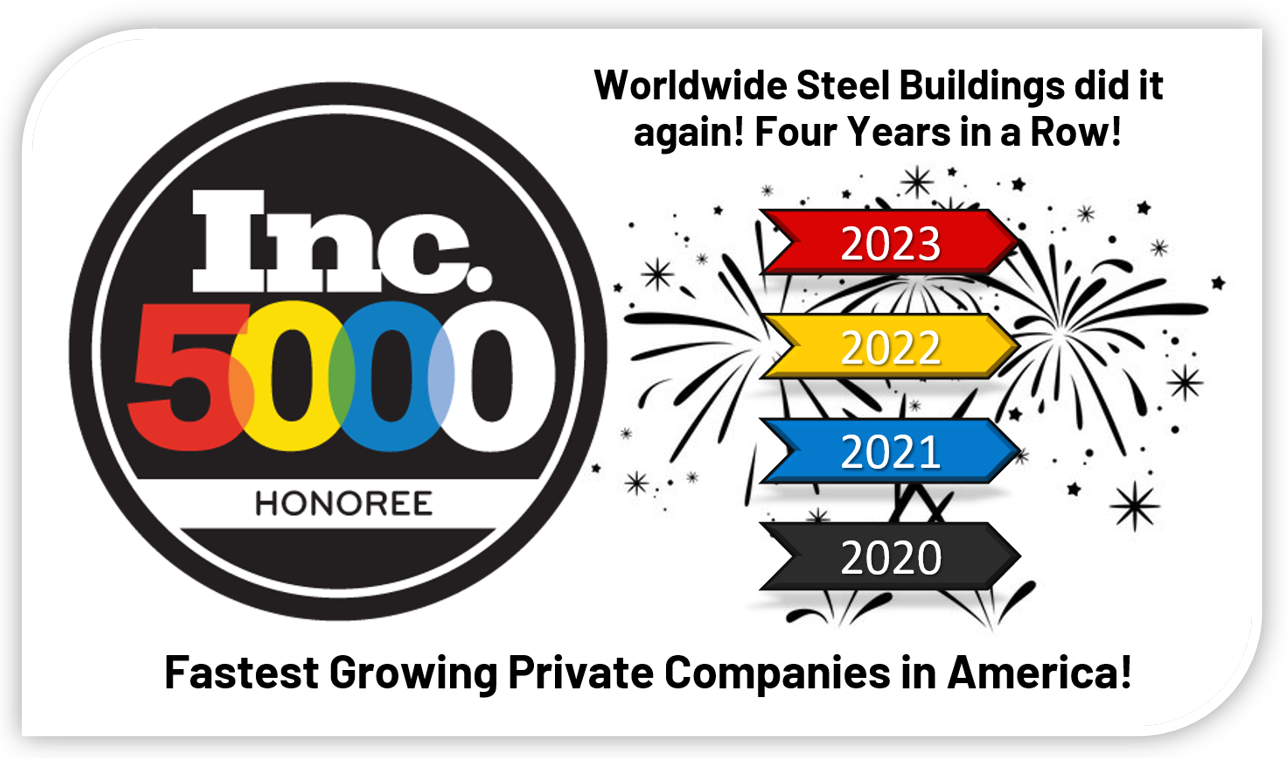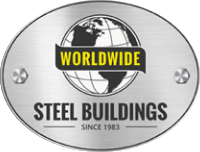Category Archives: Uncategorized
The Ultimate Guide to Metal Boat Storage Buildings
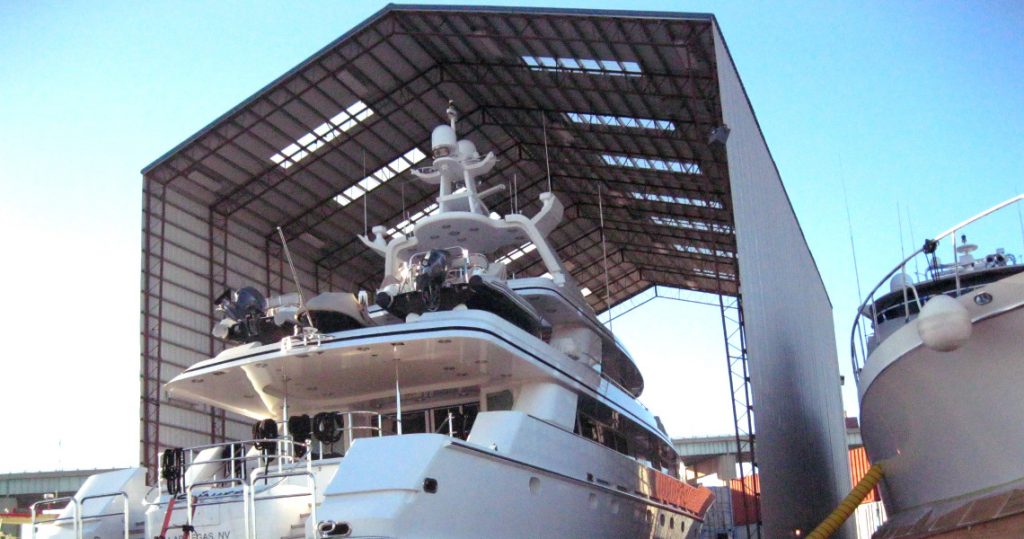
As boat owners, we understand the value of our prized watercraft and the need to protect them from harsh weather conditions, rust, and potential damage when they’re not on the water. While some of us may be fortunate enough to have access to a marina, boatyard, or storage unit, many individuals prefer the convenience of storing their boats right on their property. This is where metal boat storage buildings come into play.
Metal boat storage buildings offer numerous benefits and customization options. With the highest quality materials and a 50-year structural warranty, these American-made steel buildings are designed to withstand harsh weather conditions and heavy snow loads and provide long-term protection.
In this comprehensive guide, we will explore the world of metal boat storage buildings, discussing their numerous advantages, factors to consider when choosing one, different types, installation and maintenance tips, and even environmental benefits. Whether you’re a seasoned boat owner or just embarking on your aquatic adventures, this guide will help you make an informed decision regarding your boat storage needs.
Why Metal Boat Storage Buildings?
One of the first questions you might ask is, “Why should I choose a metal boat storage building?” The answer lies in the numerous advantages these structures offer:
Metal boat storage buildings offer unparalleled durability and protection for your valuable watercraft. These high-quality steel buildings have numerous advantages that make them an ideal choice for boat storage.
Firstly, their durability ensures they can withstand harsh weather conditions, protecting your boat from wind, rain, and snow. Additionally, metal buildings are resistant to mold and moisture, keeping your storage facility dry and safe. Their weather resistance ensures that your boat remains in pristine condition.
Furthermore, metal boat storage buildings require low maintenance, saving you time and money in the long run. The minimal maintenance requirements of these buildings make them a cost-effective option for boat storage.
With their long-lasting durability, weather resistance, low maintenance, and cost-effectiveness, metal boat storage buildings are the perfect choice for protecting and preserving your watercraft.
Factors to Consider When Choosing Metal Boat Storage Buildings
When choosing a metal boat storage building, there are several factors you should consider. These factors include the size and dimensions of your boat, as well as the security features and access control options that the storage building offers.
Size and Dimensions: Ensure that the boat storage shed can accommodate your specific watercraft. Metal boat storage buildings come in various sizes and dimensions to cater to the diverse needs of boat owners.
Security Features: Look for options with robust security features and access control systems to protect your boat from theft and vandalism.
Ventilation and Climate Control: Adequate ventilation and climate control are essential to prevent moisture buildup, mold, and mildew. Consider options that offer these features to maintain a dry and comfortable environment for your boat.
Customization Possibilities: Each boat owner has unique storage needs. Opt for a metal building that can be customized to your specs, including garage door and roof style options.
Types of Metal Boat Storage Buildings
There are various options available when choosing the suitable metal building for your needs.
Enclosed Metal Buildings: These structures, resembling metal garages, offer comprehensive protection with walls and a roof, ensuring your watercraft is shielded from all angles and securing it against various weather conditions.
Canopy and Open-Sided Structures: Perfect for boat owners who want partial coverage, these structures provide overhead protection while allowing air circulation.
Prefabricated vs. Customizable Options: Choose between streamlined prefab building systems, providing quick and easy solutions, or opt for custom-built structures tailored to your specifications. Whether you need roll-up doors or specific dimensions, customization ensures your boat storage solution is perfectly suited to your requirements.
When considering size, it’s essential to consider the dimensions of your boat and any additional equipment or accessories that need to be stored.
Security features such as motion sensors, alarms, and surveillance cameras can be added to ensure the safety of your boat. It’s also important to consider cost comparison and maintenance requirements when making a decision.
Installation and Maintenance Tips
To ensure the longevity and protection of your metal boat storage building, it must be maintained regularly. Proper installation is the first step towards ensuring its durability. When installing your metal boat storage building, make sure to follow the manufacturer’s instructions and guidelines.
Clear the site of any debris or obstacles, ensuring a level and stable foundation. Regular maintenance practices include cleaning and inspecting the building for any signs of damage or wear. Use appropriate cleaning techniques, such as gentle pressure washing and mild detergent, to remove dirt and grime.
To prevent corrosion, regularly check for any signs of rust or deterioration and promptly address them. Applying a protective coating or paint can also help prevent decay and extend the lifespan of your metal boat storage building.
Tips for Organizing Your Boat Storage Building
Organize your boat storage building efficiently to maximize space and accessibility.
When it comes to efficient shelving, consider using adjustable shelves to accommodate different sizes of boat accessories and gear. This will allow you to make the most of the available space.
Additionally, proper labeling is crucial for easy identification of items. Use clear, concise labels on each shelf or storage container to quickly locate what you need.
Utilizing vertical space is another effective way to optimize storage. Install overhead racks or hooks to hang items such as life jackets, ropes, and fishing gear.
Grouping similar items together will further enhance organization. Keep all boat maintenance tools in one area and store water sports equipment in another.
Lastly, establish regular cleaning routines to keep your storage building clutter-free and maintain a sense of order.
Environmental Benefits of Metal Storage Buildings
Metal storage buildings offer significant environmental benefits compared to other building materials. One of the key advantages is their energy efficiency. Metal is a highly reflective material, which means it can effectively reduce the amount of heat absorbed from the sun, leading to lower cooling costs. Additionally, metal buildings can be designed with insulation systems that further enhance their energy efficiency.
Another important aspect is the sustainability of metal storage buildings. Steel, the primary material used in these structures, is one of the most recyclable materials on the planet. This means that at the end of a building’s life cycle, the steel components can be easily recycled and used to produce new products, reducing the demand for new raw materials and minimizing waste.
Furthermore, steel structures have a lower environmental impact than other building materials. Steel production involves less energy consumption and fewer greenhouse gas emissions compared to materials like concrete or wood. Additionally, metal buildings can be designed to incorporate eco-friendly materials, such as cool roofs that reflect sunlight, further reducing their environmental footprint.
Your Ultimate Solution with Worldwide Steel Buildings
When it comes to safeguarding your cherished watercraft, metal boat storage buildings are the ultimate choice. Their unbeatable durability, cost-effectiveness, and customization options are unmatched, making them the top choice for boat owners worldwide.
But where can you find the perfect metal boat storage building to meet your specific needs? Look no further than Worldwide Steel Buildings. With a reputation for excellence and a commitment to delivering the highest quality metal structures, we are the go-to choice for boat owners seeking the best building kits in the business.
By choosing Worldwide Steel Buildings, you’re not just investing in a top-notch metal storage solution; you’re also choosing peace of mind. Our team of building specialists can guide you through every step of the process, from selecting the right size and design to ensuring your boat garage is tailored to your unique requirements.
To take the first step towards protecting your boat and preserving its longevity, reach out today for a free quote. Discover how our expertise, unmatched quality, and dedication to customer satisfaction can provide you with the ideal metal boat storage space that will stand the test of time. Don’t settle for anything less than the best – secure your watercraft with Worldwide Steel Buildings, your trusted partner for all your steel building needs.
Keep Your Metal Building Warm in Winter
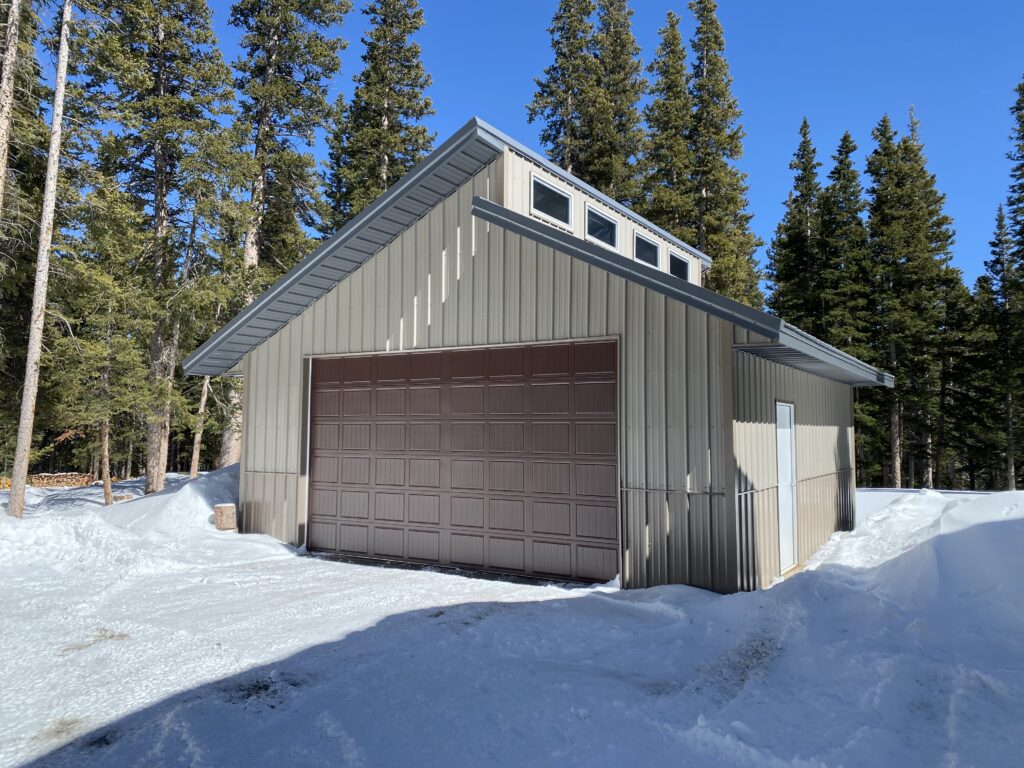
Are you struggling to keep your metal building warm during the winter? We’ve got you covered! Winter months can be harsh, especially in cold climates. If you own a metal building or steel structure, you might be concerned about how to keep it warm during the chilly season. Maintaining a comfortable temperature inside your metal structure ensures your comfort and protects your belongings and equipment from extreme cold. This comprehensive guide will explore practical strategies and solutions to keep your metal building warm in the winter months.
Insulation
Quality insulation is crucial for maintaining a comfortable temperature inside your metal building. Several insulation options are suitable for metal buildings, each with pros and cons. Investing in high-quality metal building insulation is one of the most effective ways to keep your metal building warm. Two common types of insulation for metal buildings are spray foam insulation and fiberglass insulation.
- Spray Foam Insulation: This type of insulation is highly effective at sealing gaps and providing an airtight barrier. It expands to fill even the most minor cracks and crevices, preventing cold air from entering and warm air from escaping. Spray foam insulation also has a high R-value, which measures its insulating capacity.
- Fiberglass Insulation: Fiberglass insulation is popular due to its affordability and easy installation. It provides good thermal resistance but can lead to moisture buildup if improperly sealed. It comes in batts or rolls and is designed to fit between the framing members of your steel building. Adequately installed fiberglass insulation can provide excellent thermal resistance and reduce heat loss.
- Reflective Insulation: Reflective insulation, such as radiant barriers, can be used in conjunction with other insulation materials to enhance energy efficiency. It works by reflecting heat back into the building.
Sealing and Weatherstripping
To effectively seal and weatherstrip your steel building, check for gaps and cracks in the building envelope. These common problem areas can allow cold air to enter and warm air to escape, making it challenging to keep your building warm in winter.
Inspect areas such as windows, doors, roof vents, and electrical outlets for any signs of gaps or cracks that may cause air leaks. Once identified, seal these areas using weatherstripping materials such as silicone caulk or foam tape.
Install weatherstripping around doors and windows to create a tight seal. Check for gaps around eaves and openings, and use caulk or sealant to close them. Weatherstripping techniques also include installing door sweeps on exterior doors to prevent drafts and using weatherstripping strips on windows to create a tight seal.
Upgrading Windows and Doors
One way to improve the insulation in your metal building and reduce heat loss is by upgrading your windows, skylights, and doors. Windows and doors are common areas for heat to escape, so choosing energy-efficient options is vital. Look for windows and doors with low U-values, which indicate better insulation.
Double or triple-pane windows with gas fills, such as argon or krypton, provide an extra layer of insulation. Low-emissivity (Low-E) coatings on windows can also help to reflect heat back into the building. Upgrading your windows and doors can significantly improve the insulation in your metal building and keep it warm during the winter months.
Heating Systems for Metal Buildings
Your heating, ventilation, and air conditioning (HVAC) system plays a crucial role in maintaining a comfortable indoor environment. Ensure your HVAC system is in good working condition and appropriately sized for your building. To effectively keep your metal building warm in winter, you’ll need to consider the heating systems available. There are several options to choose from, each with its own advantages and disadvantages.
One option is a forced-air heating system, which uses a furnace to heat air and then distributes it throughout the building using ductwork and vents. This type of system is efficient and can quickly heat large spaces.
Another option is radiant heating, which uses panels or tubes to emit heat directly into the space. This system is more energy efficient and provides consistent warmth. Install radiant barriers on the underside of your metal roof to reflect heat downwards. This can help maintain a comfortable temperature inside your building. Also consider a radiant floor heating system, where heat is emitted from pipes installed beneath the floor. This system provides even heat distribution and is ideal for concrete floors.
Design and Layout
When designing and laying out your steel structure, consider the impact it can have on the space’s energy efficiency. The building size, design, and layout choices you make can significantly affect how warm your building stays during the winter months.
You should also pay attention to the placement of large windows and doors. It’s best to minimize the number of windows and doors on the north-facing side of the building, as this is where the cold winds typically come from. Also, choosing energy-efficient windows and doors can help further reduce heat loss.
Lastly, consider the layout of your building. Optimize the layout to minimize open spaces and drafts, ensuring warm air is circulated efficiently throughout the area.
Additional Tips for Winterizing Metal Buildings
If you want to ensure your metal building stays warm during winter, it’s important to take some additional steps to winterize it properly.
- Thermal curtains or blinds can also be installed on windows to provide an extra layer of insulation.
- Using portable heaters, heat lamps, or space heaters can provide localized warmth in specific areas of the building.
- Proper ventilation is important to maintain air quality and prevent condensation buildup and mildew.
- Regularly maintain and inspect your heating system to ensure it’s working efficiently and providing sufficient heat to keep your metal building warm throughout the winter months.
Get a Free Quote from Worldwide Steel Buildings
Don’t let the cold winters take a toll on your comfort and energy costs. With these strategies and solutions, you can ensure that your metal building remains warm and welcoming even during the coldest winters. By taking proactive steps to insulate and seal your building, you’ll increase comfort and save on energy costs.
Whether you want to upgrade your insulation, HVAC system, or explore other climate control options, we have the expertise to assist you. Keep your metal building warm and comfortable all winter long. Contact Worldwide Steel Buildings today for a free quote on a prefab metal building kit and climate control solutions. Don’t let colder climates affect your comfort and energy costs.
8 Benefits of a Barndominium
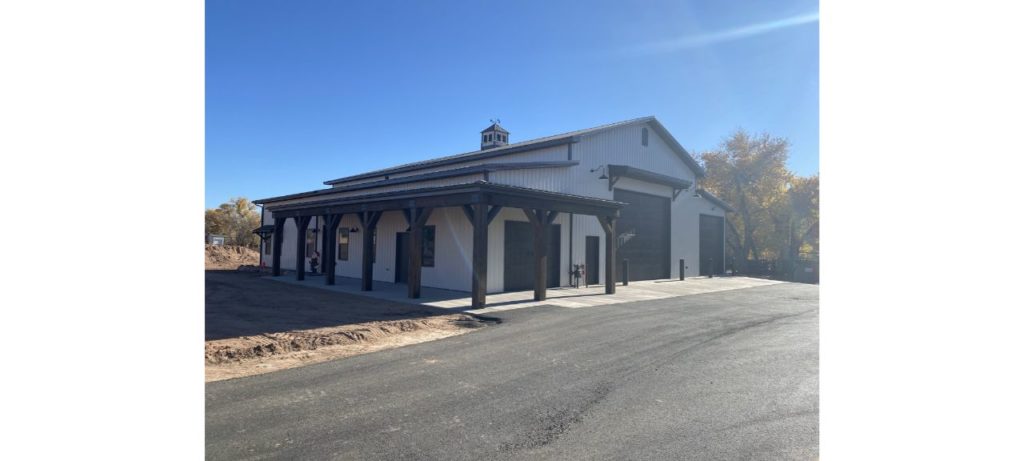
In recent years, barndominiums have grown in popularity among homeowners looking for a unique blend of rustic charm and modern living. These versatile metal structures offer numerous advantages over traditional homes, making them an excellent choice for those seeking an uncommon living experience. In this blog, we’ll explore the multiple benefits of barndominium living and explain why these homes are gaining popularity.
From their exceptional durability, spacious open layouts, and energy-efficient features to their low maintenance requirements and customization potential, barndominiums have captured the attention of homeowners and real estate enthusiasts alike. We’ll dive into these advantages and showcase how barndominiums cater to modern needs while offering a one-of-a-kind living experience that’s as stylish as it is practical.
Whether you’re a first-time homebuyer looking for your dream home, an aspiring builder, or simply curious about the appeal of barndominiums, join us as we explore the eight benefits of a barndominium.
1. Durability
One of the main benefits of steel barndominiums is their durability. They are highly resistant to corrosion and the wear and tear that can affect traditional wooden houses. Steel frames, metal siding, and metal roofing are solid, providing excellent structural support. This durability ensures that your investment stands strong for years to come, even in harsh weather conditions. Unlike wooden homes, steel frame barndominiums can withstand hurricanes, tornadoes, and earthquakes, offering peace of mind to homeowners.
2. Spacious Living
Another great feature of barndominiums is their open floor plans. Unlike the compartmentalized layout of many traditional houses, barndominiums offer vast, open spaces that maximize your living area. This open concept design creates a sense of freedom and versatility that’s perfect for various lifestyles. Barndominiums typically come in at a lower price per square foot than traditional homes, giving you more house for your budget. This extra living space can be used for a variety of purposes, including additional bedrooms, recreational areas, or even a home office.
3. Energy Efficiency
In an era where eco-friendliness and energy efficiency are increasing in popularity, metal barndominiums are a top choice for homeowners. These structures are known for their excellent insulation properties, which contribute to energy savings. The insulation systems used in metal buildings help maintain comfortable indoor temperatures, reducing heating and cooling costs throughout the year. Homeowners in rural areas, where access to utility services may be limited, appreciate the self-sufficiency and lower energy bills that barndominiums provide. Additionally, metal building materials are recyclable, minimizing waste and benefiting the environment.
4. Low Maintenance
Steel building homeowners enjoy the luxury of less maintenance. Unlike wood frame homes that are susceptible to termite infestations and corrosion, metal homes are virtually termite-proof and corrosion-resistant. Compared to traditional wooden houses that require regular upkeep to combat termites and wood rot, barndominiums are known for their low maintenance. The metal siding and steel frame require minimal care, allowing you to spend more time enjoying your home and less on upkeep. This can also mean fewer repair and maintenance costs over the years.
5. Versatility in Design
Barndominiums allow homeowners to customize their new home to match their unique preferences. High ceilings, porches, and open spaces provide a blank canvas for interior design and layout creativity. This versatility allows you to create your dream barndominium tailored to your vision. Many barndominiums feature high ceilings, creating a spacious and airy atmosphere that homeowners love. In addition to being durable, metal siding is also highly customizable. Homeowners can choose from various colors and textures to create their desired exterior look.
6. Affordability
Building a barndominium can often be more cost-effective than traditional wooden houses. Barndominium kits are prefabricated, which means less on-site labor is required. This leads to reduced labor costs, faster construction times, and lower construction costs. Lower costs, combined with the efficiency of the building process, make barndominiums an attractive option for budget-conscious homebuyers. The affordability of barndominiums can also lead to lower real estate taxes and insurance rates.
7. Resale Value
The resale value of barndominiums is quite promising. These unique homes are gaining popularity and selling at higher prices. Many people want barndominiums because they come with special features like open spaces and energy efficiency. Barndominiums look charming and don’t need much upkeep, making them even more attractive to buyers. Plus, you can find them in various places, which makes them a good choice for different buyers. All these factors add up to barndominiums being an intelligent investment, likely to grow in value when you decide to sell.
8. Barndominium Kits
For those looking for a convenient and straightforward home build, barndominium kits are available. These kits include all the essential components, making the construction process more accessible for DIY enthusiasts and professional builders. Barndominium kits are available in various configurations, making it easier than ever to start the journey to your dream barndo. These kits can save time and money during the construction process.
At Worldwide Steel, we manufacture our own precision-welded steel trusses and design our barndominium kits with the DIY-er in mind. That means you can save even more on barndominium construction costs — no construction companies required.
Embrace the Barndominium Lifestyle with Worldwide Steel Buildings
From their durability and spacious designs to their energy efficiency and customization potential, barndominiums are a type of home that both homeowners and real estate professionals love! If you’re excited about becoming a barndominium owner and want to turn your dream into reality, look no further than Worldwide Steel Buildings.
Worldwide Steel Buildings has over 100 years of building experience and is a leading commercial and residential steel building manufacturer. Our expertise in steel framing and construction materials makes us the perfect partner in your journey to barndominium ownership. And we have a 50-year warranty on all our buildings, including barndominiums. We also offer financing options for both residential and commercial steel buildings.
Don’t wait any longer to embrace the barndominium lifestyle! Contact Worldwide Steel Buildings for your free quote today and take the first step towards owning your dream barndominium – a home that blends rustic charm with modern convenience, all under one sturdy steel roof.
Understanding the Different Types of Building Permits
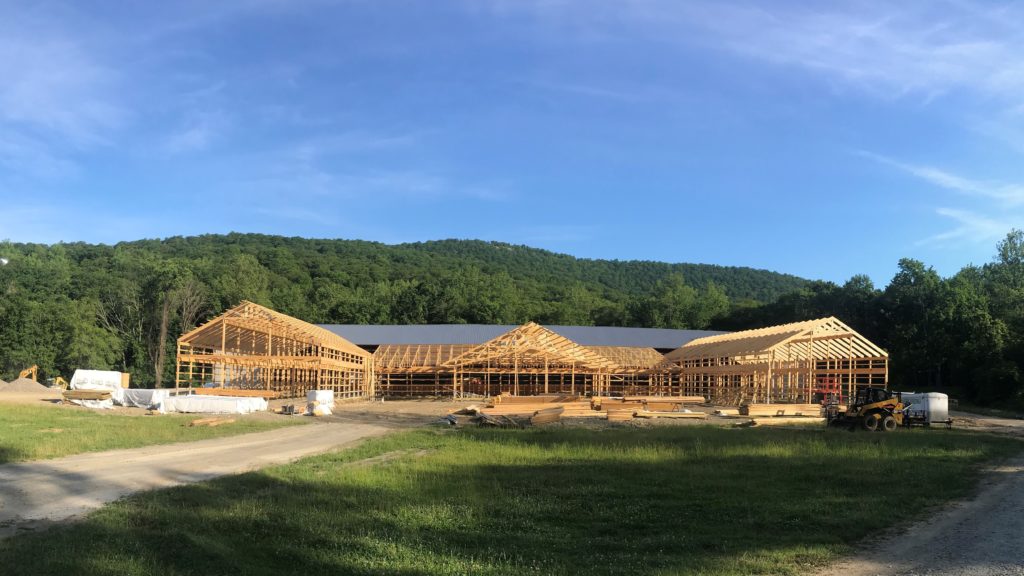
Starting the journey of constructing a metal building is an exciting endeavor, but it comes with a variety of regulations, codes, and permits to navigate. Whether you’re envisioning a commercial building, a single-family home, or an agricultural structure, understanding the specific zoning regulations, building codes, and building permits required for metal buildings is essential. This guide aims to illuminate the complex world of metal building permits, empowering you to confidently navigate the process.
Building Codes for Metal Structures
When it comes to constructing steel buildings, adhering to building codes is crucial to ensure structural integrity and public safety. Steel buildings are designed to withstand extreme weather conditions, fires, and other challenges, making them a reliable and environmentally sustainable choice. Understanding local building codes is a key aspect of a successful project, whether it’s adding a steel structure to your residential property or a commercial construction project, such as an industrial warehouse.
What are Building Codes?
Building codes are regulations established to uphold safety standards in construction projects. These encompass everything from structural integrity to electrical systems, covering every aspect of safe and habitable structures. Public safety is the foremost concern behind these codes, which are created and updated by the International Code Council (ICC).
These regulations are applicable not only to homes but also to commercial buildings, public spaces, and large gathering structures. Because building codes vary from one jurisdiction to another, it’s essential for homeowners, builders, and developers to familiarize themselves with local requirements before commencing any construction work to prevent costly mistakes down the line.
Understanding Different Building Codes
- Structural Codes: Engineers design structural codes to withstand extreme weather events, including wind loads and appropriate snow loading. Load requirements are determined by the climate and weather patterns of a specific area.
- Energy Codes: Similar to other types of structures, steel buildings are subject to energy codes that include insulation requirements. Different insulation standards apply to metal construction compared to wood or concrete materials.
- Other Building Codes: Each state imposes various code restrictions covering aspects such as electrical work, plumbing, mechanical systems, and fire safety. Familiarizing yourself with these codes and permitting processes is crucial before investing in a steel building.
Decoding Building Permits and Their Significance
Building permits serve as an official authorization granted by local municipalities, allowing you to proceed with the construction, modification, or expansion of a structure. This can encompass all manner of projects, from demolition to new building construction, from moving retaining walls to a full interior remodel. These permits act as a safeguard, ensuring that projects adhere to safety codes, zoning laws, and a host of other regulations. The type of permit you need depends on the nature and scale of your metal building project.
Commercial Building Permits vs. Residential Building Permits
Commercial Building Permits: A commercial building permit is essential for structures designated for commercial activities, including retail stores, warehouses, or self-storage centers. If your project involves erecting metal structures for these purposes, obtaining a commercial building permit is a necessity.
Residential Building Permits: For those planning to construct metal homes or barndominiums, a residential building permit is mandatory in most places. This permit applies to structures designed for residential purposes, ensuring safety and adherence to regulations. Certain alterations might not require permits, such as minor roof replacements or minor additions.
Types of Metal Building Permits
There are a range of building permits that may be applicable to your specific project. When planning a project, it’s important to consult with your project manager or construction team to ensure the right permits are planned for. If you’re taking on this project yourself, consult with the local laws to understand the range of permits you’ll need before starting your project. Below is a list of some permits to expect, but this may vary depending on your location and your project.
1. New Construction Permits
If you’re considering building from the ground up, a new construction permit stands as the foundational requirement. This permit serves as the green light for erecting a new building from scratch and typically involves a rigorous review of architectural plans and engineering specifications.
2. Remodeling and Renovation Permits
When significant alterations are planned for an existing building, remodeling permits come into play. These permits are indispensable for modifications that impact the building’s layout, structural integrity, or its various systems, such as plumbing and electrical. By requiring these permits, authorities ensure that the planned alterations meet safety and code standards.
3. Occupancy Permits
Occupancy permits signify the readiness of a new construction or a renovated building to be inhabited. Authorities conduct thorough inspections to ensure the structure aligns with all applicable codes and regulations before granting this permit. It’s the official stamp of approval that your space is safe and habitable.
4. Electrical and Plumbing Permits
Projects involving electrical or plumbing work typically demand specific permits. An electrical permit is essential for activities ranging from installing wiring to adding power outlets, while a plumbing permit is necessary when modifying plumbing systems. These permits ensure that these critical systems are installed or altered in compliance with safety and functionality requirements.
5. Accessory Structure Permits
For smaller metal structures like sheds, carports, or storage units, an accessory structure permit might be required. Even though these structures are smaller in scale, they still need to meet safety standards and zoning regulations.
6. Foundation and Structural Permits
When constructing a metal building, ensuring a solid foundation is vital. You might need specific permits for tasks like excavating, pouring concrete, or installing the metal building’s foundation. Additionally, structural permits ensure that the framework of your metal building meets the necessary codes and specifications.
Steps to the Permit Process
The requirements for a permit can vary from location to location and typically have a permit fee. At a high level, getting a building permit (or permits) involves the following steps:
1. Application Submission: Kickstart the process by submitting a comprehensive building permit application that details the scope, location, and intricacies of your project.
2. Plan Review: Regulatory authorities conduct a meticulous review of your building plans, ensuring they adhere to various regulations. This review involves multiple departments, such as zoning, structural engineering, and fire safety.
3. Permit Issuance: Once your plans successfully navigate the review process, an issued permit is granted, signifying the official permission to initiate construction.
4. Inspections and Compliance: Throughout the construction process, inspections will be conducted at various stages to ensure that the work aligns with the approved plans and codes. This may include inspections of the foundation, framing, electrical systems, and more.
Building Your Vision, Step by Step
Taking on a construction project, whether big or small, is a complex adventure. With a good understanding of different types of building permits, you’re ready to navigate the ins and outs of permits. From making sure the structure is strong to following zoning rules, each permit shapes how your project turns out.
While the world of permits and regulations can appear overwhelming, resources like those offered by Worldwide Steel Buildings can serve as invaluable guides. As you work towards your construction goals, remember that the right permits make your project smooth and successful.
Are you ready to transform your construction vision into reality? Explore the possibilities with Worldwide Steel Buildings and ensure your project is built on the foundation of knowledge and expertise. Let’s make your construction dreams a reality together!
A Complete Guide to Spray Foam Insulation for Metal Buildings
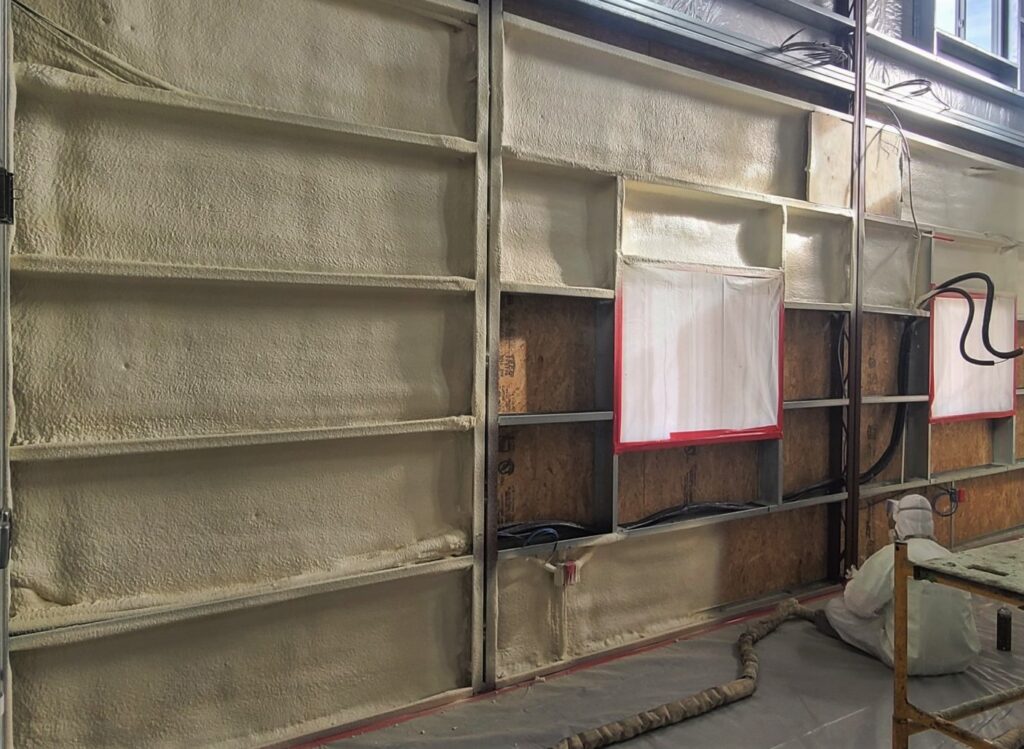
Metal panels and roofs are crucial components in constructing durable and sustainable steel building envelope systems. However, these panels lack built-in insulation value, making it necessary to add insulation, air barriers, and vapor retarders to enhance energy efficiency.
When insulating your metal building, Spray polyurethane foam (SPF) insulation is a top choice for homeowners and subscribers seeking energy-efficient solutions. With its exceptional properties, including a superior thermal barrier, air-tight seal, and structural strength, closed-cell spray foam is the go-to insulation material for metal buildings.
To ensure SPF’s successful application and performance on metal panels, following best practices and design considerations is essential. In this comprehensive guide, we will delve into the benefits, installation, and concerns of using spray foam insulation to optimize energy savings, improve air quality, and ensure the longevity of your metal building.
Understanding Spray Foam Insulation
SPF insulation is a two-component chemical mixture that is sprayed onto metal panels. Unlike traditional fiberglass insulation, spray foam conforms to any substrate, including metal panels and roofs, filling even the tiniest crevices. The foam undergoes an exothermic reaction during curing, reaching core temperatures as high as 325°F for short periods. This seamless application creates a continuous thermal and moisture barrier, preventing heat transfer and minimizing the risk of mildew or moisture-related issues. Closed-cell SPF is the commonly used type of foam insulation on metal panels due to its superior insulation and water-resistant properties.
Differentiating Open-Cell and Closed-Cell Foam
There are two classes of SPF products: open-cell and closed-cell foam. Open-cell SPF provides insulation and air sealing for building assemblies but allows water migration and moisture vapor movement. Closed-cell SPF, on the other hand, offers superior insulation and prevents water entry and excessive moisture vapor movement. Closed-cell SPF is recommended for applications on metal panels.
Advantages of Spray Foam Insulation for Metal Buildings
- Superior Energy Efficiency: Closed-cell spray foam insulation offers a higher R-value than other insulation options, ensuring maximum energy efficiency and reducing energy costs for metal buildings.
- Enhanced Thermal Barrier: With its air-tight seal, closed-cell spray foam acts as a formidable thermal barrier, preventing heat transfer through metal walls and roofs. This insulation type significantly reduces energy loss and provides consistent temperature control inside the building.
- Air Quality Improvement: By sealing gaps and cracks, spray foam insulation improves indoor air quality by preventing the infiltration of pollutants, allergens, and outdoor contaminants into the metal building.
- Structural Strength: Closed-cell spray foam adds structural integrity to metal buildings, reinforcing the walls and roofs. This insulation type increases the overall durability and longevity of the structure.
10 Best Practices for SPF Insulation on Metal Panels
- Recommended applications: SPF is recognized as an insulation material suitable for use below and in contact with through-fastened metal roof assemblies.
- Caution with standing seam metal roofs: It is discouraged to use SPF below and in contact with standing seam metal roofs designed for thermal expansion and contraction, as it may restrict panel movement during temperature changes.
- Surface preparation: Ensure the metal panel surface is free from moisture, lubricants, dirt, or other contaminants before applying SPF.
- Application technique: The technique used to apply SPF can impact the performance and appearance of the foamed panels. Follow the recommended “picture frame” technique to achieve optimum insulation density, adhesion, and thickness.
- Avoid using release fabric membrane: Using a release fabric membrane between foam and metal panels in a wall assembly is not recommended, as it may create voids between the SPF and the panel.
- Minimize stress-induced deformation: Be aware that stress-induced deformation, commonly known as “oil canning,” may occur on 29 gauge or thinner material. Follow the foam manufacturer’s recommended application technique to minimize this effect.
- Fire protection and thermal performance: Always comply with national and local code requirements for fire protection. Exposed SPF may require additional thermal barriers or fire protection measures. Ensure compliance with energy code requirements for thermal performance.
- Collaboration with contractors: Inform electrical and HVAC contractors about the use of SPF to prevent covering junction boxes and to ensure proper sizing of equipment and adequate make-up air provision. Prevent SPF chemicals from being drawn into the building’s ventilation system.
- Engage certified SPF contractors: Consider hiring SPF contractors accredited by the Spray Polyurethane Foam Alliance’s (SPFA) Professional Certification Program (compliant with ISO 17024) to ensure high-quality and safe installation of SPF insulation.
- Consult with metal panel system manufacturer: Before applying SPF, consult with the metal panel system manufacturer to obtain specific recommendations and guidance.
Application Technique for Spray Foam Insulation on Metal Panels
When insulating metal buildings with spray polyurethane foam (SPF), the application technique is key in achieving optimal insulation density, adhesion, and thickness. To ensure a successful installation, it is important to have a certified foam spray technician handle the process. The recommended approach for applying SPF is the “picture frame” technique, as described by the Spray Polyurethane Foam Alliance (SPFA).
In the “picture frame” technique, the applicator surrounds the wall framing stud’s interior perimeter with a controlled foam thickness, allowing it to rise along the stud. This method ensures proper insulation and prevents SPF from getting between girts and architectural metal wall panels, which could lead to metal deformation.
During the application, the applicator should pay attention to the thickness of the initial pass fillet. It should be at least 0.5 inch and should not exceed the maximum pass thickness recommended by the foam manufacturer. This initial pass thickness is specified to provide enough material to activate the blowing agent and initiate the curing process. After picture framing the perimeter of the area, the applicator then fills in the center of the cavity using the maximum thickness recommended by the foam manufacturer. The maximum pass thickness varies depending on the foam formulation and is provided in the technical data for each SPF product. It is important to follow the manufacturers’ installation instructions on pass thickness limits and proper cooling times between subsequent passes to achieve the desired total thickness of insulation.
Before applying the SPF, installers are trained to inspect the substrate surface for moisture, dirt, oils, rust, or any other conditions that could interfere with proper foam adhesion. Adhesion to the metal surface can be determined on-site using a pull-tester per ASTM D 4541, a standard test method for the pull-off strength of coatings using portable adhesion testers.
Some SPF contractors may use a release material such as building wrap or fabric to replace damaged panels easily. However, using a release material may create air gaps between the back of the SPF foam and the metal panel, leading to potential condensation accumulation between the SPF and the panel and framing members. As a result, caution should be exercised when considering using release materials during the application process.
An alternative method evaluated by the Metal Construction Association (MCA) is the Blown In Blanket System (BIBS) non-woven fabric system. While SPF adhered properly to the BIBS membrane and allowed easier replacement of metal panels, it proved challenging to install directly onto the lightweight BIBS fabric in windy conditions. As a result, SPF applied directly onto the metal panels remains a more viable and efficient option in terms of the appearance of the panels.
Moving Forward with SPF Insulation
Insulating your metal building with Closed-cell Spray Polyurethane Foam insulation offers numerous benefits, from energy efficiency and cost savings to improved air quality and structural strength. Closed-cell spray foam provides an exceptional thermal barrier, air-tight seal, and moisture resistance, making it the best insulation choice for metal buildings. By creating a comfortable and efficient environment, spray foam insulation ensures long-lasting performance and protects your investment.
You can ensure a successful SPF insulation project on metal panels by following best practices and design considerations outlined in this guide, such as proper surface preparation, recommended application techniques, and collaboration with certified SPF contractors. Always consult with the metal panel system manufacturer for specific recommendations and guidelines. With its many advantages, spray foam insulation is the ideal solution for maximizing the energy efficiency and durability of your metal building.
For more information on spray polyurethane foam insulation and its application on metal panels, visit the Spray Polyurethane Foam Alliance (SPFA) website at www.sprayfoam.org.
10 She Shed Ideas: Create Your Dream Retreat
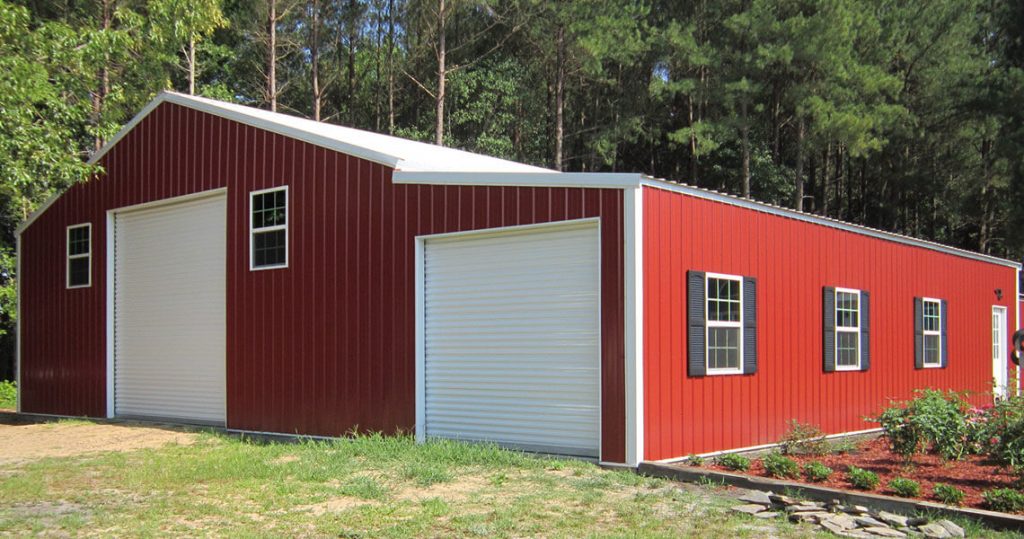
Are you looking to create a personal sanctuary in your own backyard? A garden shed turned living space is the answer to your dreams! These charming backyard sheds provide a cozy, customizable space to indulge in hobbies, work from home, or as a relaxing backyard getaway. In this blog, we’ll explore various she shed ideas that will inspire you to transform your garden or storage shed into the ultimate haven. Whether you’re looking for a serene reading nook, an artistic escape, or a gardening oasis, Worldwide Steel Buildings has the perfect DIY solutions to bring your vision to life.
1. Cozy Reading Nook
Indulge in losing yourself in a good book within your own private reading nook. Transform your she shed into a cozy sanctuary by incorporating plush seating, such as an inviting armchair or a comfortable daybed. Enhance the ambiance with soft lighting, string lights, or even a chandelier for a touch of elegance. Add bookshelves or built-in storage to house your beloved book collection. With the right combination of natural light, a peaceful setting, and your favorite reads, your reading nook will become a cherished escape.
2. Creative Arts and Crafts Room
If you’re a craft enthusiast, transform your she shed into a dedicated craft room where you can let your creativity grow. Set up a spacious worktable or crafting station with ample storage for all your supplies. Install shelves, pegboards, or cabinets to keep your materials organized and easily accessible. Consider adding a cutting table or a sewing machine station if you enjoy sewing or quilting. Incorporate good lighting, such as task lamps or overhead fixtures, to ensure proper visibility for your intricate projects. Personalize the interior design with colorful home decor, inspirational quotes, and creative artwork. This she shed will become your haven for crafting, allowing you to immerse yourself in your favorite hobbies.
3. Garden Oasis
Embrace the beauty of nature by creating a she shed that doubles as a garden oasis. Choose a shed design that seamlessly blends with your landscaping, incorporating features like skylights and windows to flood the space with natural light. Install French doors that open up to your own slice of paradise, where you can surround yourself with blooming flowers and lush greenery, and add window boxes for planting additional foliage. Use storage space for gardening tools and create a potting shed for planting and nurturing your favorite blooms. Your garden oasis she shed will be a tranquil retreat for both relaxation and gardening pleasures.
4. Home Office and Workspace
Achieve the perfect work-life balance by transforming your she shed into a functional home office and workspace. Design a layout that maximizes productivity and reflects your personal style. Add a desk, comfortable seating, and ample storage to keep your workspace organized and clutter-free. Ensure your she shed has electrical outlets and internet connectivity to support your work requirements. With a dedicated home office in your own backyard, you can experience the ideal work environment away from distractions.
5. Guest House
Out of room for guests in your main house? Imagine having a charming guest house in your backyard, ready to welcome friends and family with comfort and privacy. Transform your she shed into a cozy and inviting guest retreat. Furnish the space with a comfortable bed, seating area, and essential amenities like a mini-fridge and coffee station. Decorate with cozy textiles, soft lighting, and tasteful home decor to create a warm and welcoming atmosphere. You can offer your loved ones a memorable and unique stay with your she shed guest house.
6. Outdoor Living Extension
Extend your she shed’s charm to the outdoors by creating a seamless connection with your backyard. Design a cozy outdoor living area adjacent to your she shed where you can relax and entertain. Install a patio or deck and furnish it with comfortable outdoor seating, cushions, and a coffee table. Enhance the atmosphere with a fire pit or outdoor heater, allowing you to enjoy your she shed retreat even during cooler evenings. Create a stone path to your she shed, surrounded by landscaping and flowers. This outdoor extension will provide a perfect outdoor space for relaxation, gatherings, and enjoying the fresh air.
7. Rustic Farmhouse Retreat
For those who adore the rustic charm of farmhouse style, turn your she shed into a delightful farmhouse retreat. Use reclaimed wood to create accent walls or install rustic wooden beams on the ceiling. Choose furniture pieces with distressed finishes or opt for vintage finds to add character. Incorporate farmhouse-inspired decor such as mason jar pendant lights, gingham patterns, and galvanized metal accents. Let your she shed exude a warm and inviting environment like a countryside escape.
8. Zen Meditation Retreat
Transform your she shed into a serene Zen meditation retreat, offering a peaceful space for relaxation and mindfulness. Choose a minimalist design with clean lines and neutral colors to create a calm atmosphere. Incorporate comfortable floor cushions or a meditation chair for seating. Add natural elements like bamboo, stones, and plants to enhance the Zen interior design. Install a small water feature like a tabletop fountain to create soothing sounds. Decorate the walls with inspirational quotes or serene artwork. This she shed will become your sanctuary for finding inner peace and tranquility.
9. Outdoor Fitness Studio
Create a dedicated outdoor fitness studio within your she shed to promote a healthy and active lifestyle. Equip the space with exercise mats, weights, resistance bands, and other fitness equipment. Install mirrors along one wall to facilitate proper form during workouts. Consider adding a ballet barre or a yoga wall for practicing different exercise routines. Ensure the space is well-ventilated and incorporates fans or windows that can be opened to allow fresh air during workouts. This she shed will serve as your personal fitness haven, allowing you to stay active and motivated in the comfort of your own backyard.
10. Multi-Purpose Haven
Not sure how to best use your additional backyard living space? Consider designing your she shed as a multi-purpose haven to make the most of a small space. With clever furniture choices and versatile layouts, you can create a space that serves multiple functions. Invest in a daybed or a sofa that can double as a comfortable seating area during the day and transform into a cozy bed for guests at night. Incorporate a folding desk or a wall-mounted table that can be used as a workspace for your hobbies or as a dining area when needed. By optimizing the functionality of your she shed, you can maximize the use of your extra space.
Design the She Shed of Your Dreams
With these she shed ideas, you can create the retreat of your dreams right in your own backyard. Worldwide Steel Buildings offers a range of shed kits that provide the perfect foundation for your personalized space. Whether you envision a cozy reading nook, an art studio haven, a garden oasis, or a versatile home office, our high-quality steel buildings offer durability, design flexibility, and endless possibilities. Visit Worldwide Steel Buildings’ she shed kits page to explore our offerings and start turning your she shed dreams into a reality. Embrace the joy of having a space that reflects your personality and offers a peaceful escape in the comfort of your own backyard.
Growing Beyond Limits: The Advantages and Benefits of a Metal Greenhouse
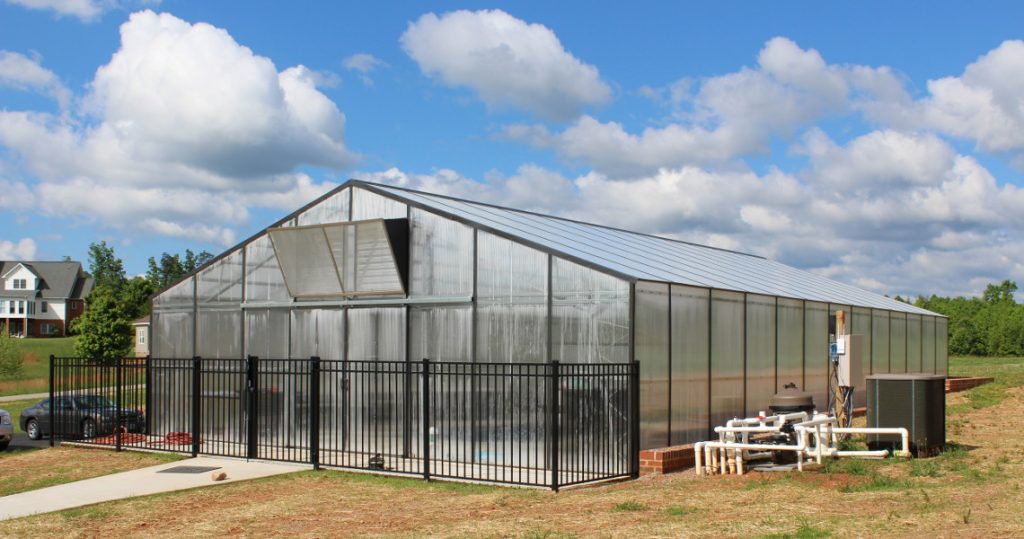
Are you an avid gardener looking to extend your growing season and create the perfect environment for your plant? If so, a greenhouse might be just what you need. Greenhouses offer numerous benefits, allowing growers to cultivate various plants regardless of weather conditions. In this blog, we’ll focus specifically on the advantages and benefits of a greenhouse, especially a metal greenhouse from Worldwide Steel Buildings. Whether you’re a beginner or an experienced gardener, a greenhouse can provide you with the perfect growing environment for your favorite plants and vegetables.
9 Benefits of Metal Greenhouses
A metal greenhouse offers many benefits, making it an excellent choice for greenhouse gardening enthusiasts. Let’s dive into the major benefits and advantages of a greenhouse and explore how it can transform your gardening experience.
1. Year-Round Growing Season
One of the primary benefits of a greenhouse is the extension of the growing season. Traditional outdoor gardening is limited to specific months dictated by the local climate. However, with a greenhouse, you can start your gardening efforts earlier in the spring and continue well into the fall. The controlled environment inside the greenhouse provides the necessary warmth and protection for your plants, allowing you to grow a broader range of crops and enjoy fresh produce for a more extended period. The benefits of a greenhouse include creating a favorable environment that extends the growing season and provides year-round gardening opportunities. By creating a controlled environment, a metal greenhouse shields your plants from frost, heavy rains, extreme temperatures, and other adverse weather elements. This means you can indulge in the pleasure of growing fresh vegetables, exotic plants, and even tropical plants, regardless of the season.
2. Enhanced Plant Growth
When it comes to plant growth, a metal greenhouse gives you complete control over the growing conditions. You can adjust and optimize factors such as temperature, humidity, and light exposure to create an ideal environment for different types of plants. This level of control results in faster, healthier plant growth, leading to higher yields and more vibrant blooms. Whether you’re growing cucumbers, organic vegetables, delicate flowers, or a variety of plants, a metal greenhouse provides the perfect conditions for their development.
3. Weather Protection
One of the primary advantages of a metal greenhouse is its durability and ability to withstand harsh weather conditions. Unlike other greenhouse materials, such as glass or plastic, metal structures offer excellent resistance to strong winds, heavy snow loads, and even hailstorms. The robust construction of a metal greenhouse ensures that your plants and the structure itself remain protected, minimizing the risk of damage during extreme weather events. This durability makes a metal greenhouse a long-term investment, providing reliable shelter for your plants for years to come.
4. Climate Control and Temperature Regulation
Maintaining a stable and suitable temperature is crucial for successful greenhouse gardening. Metal greenhouses excel in temperature control due to their excellent insulation properties. The metal frame helps retain heat during colder months, while proper ventilation options prevent overheating in warmer seasons. This means you can create an optimal growing environment for your plants, regardless of the external climate. A greenhouse allows you to have complete control over the growing conditions. You can adjust and regulate factors like temperature, humidity, and ventilation to create the optimal environment for your plants. This level of control ensures that your plants receive the ideal conditions for growth, resulting in healthier and more resilient plants.
5. Versatile Design and Growing Space
Greenhouses come in various designs and sizes, offering versatility and customization options to suit different needs. A metal greenhouse, such as the ones provided by Worldwide Steel Buildings, offers durability, strength, and flexibility. Metal structures allow for spacious interiors with ample room for your plants to thrive. You can create different growing zones, arrange shelving and benches, and even incorporate hydroponics systems for efficient space utilization. The benefits of a greenhouse include the ability to design and optimize your growing space. With a metal greenhouse, you have the freedom to adapt the structure to your gardening needs and maximize the potential of your growing space. This flexibility ensures that you can efficiently utilize the available area and expand your gardening capabilities.
6. Pest and Disease Control
Greenhouse gardening offers added protection against pests and diseases that can harm your plants. A metal greenhouse acts as a physical barrier, preventing common garden pests such as insects, rodents, and larger animals from accessing your plants. This reduces the need for harmful pesticides and allows you to adopt more organic gardening practices. Additionally, the controlled environment and improved air circulation in a metal greenhouse can help minimize the risk of fungal diseases and other plant ailments, resulting in healthier plants and higher yields.
7. Energy Efficiency
Metal greenhouses are known for their energy efficiency. The metal frame provides excellent insulation, helping to retain heat during colder months and reducing the need for supplemental heating. Additionally, modern metal greenhouse designs often incorporate energy-saving features such as double-glazed windows, efficient ventilation systems, and insulation materials. These energy-efficient features not only contribute to a more sustainable gardening practice but also help reduce your overall energy costs.
8. Durability and Longevity
A metal greenhouse offers exceptional durability and longevity compared to other greenhouse materials. Metal structures are highly resistant to rust, corrosion, and damage from pests, providing a long-lasting solution for your greenhouse needs. With proper maintenance, a metal greenhouse can withstand the test of time, allowing you to enjoy its benefits for years to come. This makes it a worthwhile investment for both hobby gardeners and commercial growers seeking a reliable and durable growing environment.
9. Customization and Expansion Options
Metal greenhouses provide ample opportunities for customization and expansion. Whether you’re starting with a simple greenhouse for personal use or planning to establish a larger commercial operation, a metal greenhouse can be tailored to your specific needs. You can choose from a variety of sizes, designs, and additional features such as shelving, benches, and irrigation systems to create a greenhouse that suits your gardening goals. Furthermore, if your needs change in the future, metal greenhouses allow for easy expansion and modification, ensuring that your greenhouse can grow along with your gardening ambitions.
Design Your Own Metal Greenhouse
Investing in a metal greenhouse unlocks a world of benefits for growers of all levels. From providing a year-round growing season and weather protection to enhancing plant growth and offering complete control over the growing environment, a metal greenhouse is a valuable addition to any gardener’s toolkit.
Start your greenhouse gardening journey today and experience the satisfaction of growing your own food and creating a thriving garden space. Worldwide Steel Buildings is your trusted source for high-quality metal greenhouse solutions. Explore the metal greenhouse options available at Worldwide Steel Buildings, where you’ll find a variety of designs and features to suit your needs. With a metal greenhouse, you’ll have the power to nurture a diverse range of plants, protect them from adverse weather conditions, and enjoy the benefits of fresh, homegrown vegetables.
When you’re ready to create your own dream greenhouse, reach out and contact Worldwide Steel Buildings at (800) 825-0316. Our expert team can guide you through the process, helping you design and construct a metal greenhouse that perfectly suits your needs and preferences.
Are Barndominiums Safe in Severe Weather?

As barndominiums continue to grow in popularity, many would-be barndominium owners wonder: are barndominiums safe? These metal structures offer the perfect combination of living space with workspace and have various barndominium floor plan options to choose from at a fraction of the cost of a traditional house, all while adhering to stringent building codes. And guess what? They also are incredibly energy-efficient and durable and, in many cases, are safer than a conventional home. If you’ve been dreaming of becoming the homeowner of a barndominium but have held back due to questions around safety, prepare to have all your worries put to rest. These metal buildings stand the test of time and natural disasters in many cases, meaning you and your family can sleep soundly knowing you’re protected in an emergency.
Are Barndominiums Safe in Rain?
Unlike traditional homes that are built from mostly wood materials, metal barndominiums are constructed from steel frames and metal siding that keep them protected from water damage and corrosion. This means these structures are also not susceptible to rot or other wood-related water ailments. When a heavy storm comes through, you can be at ease knowing that mold and mildew are not spreading through your home. The steel sheeting used in these metal structures is also galvanized, making them resistant to rust as well. As an added benefit, by protecting against water damage, the metal materials in this residential building also helps keep critters such as termites, ants, or other unwelcome pests away.
Are Barndominiums Safe in Lightning?
While lightning strikes are rarely a problem for any home, steel barndominiums may have additional safety benefits. It might be surprising to note that steel does not attract lightning. In fact, compared to other materials, metal has a lower electrical resistance. This means that if lightning does strike your home, the steel helps to spread out the heat of the strike and pass through the metal and into the ground. The steel materials used to build your barndo help protect the exterior, which also protects the interior. All your electronic appliances and the people inside are shielded from any harmful effects.
Are Barndominiums Safe in a Tornado?
Barndominiums are highly popular in tornado alley and rural areas, including Texas, Oklahoma, Kansas, and Missouri. This raises the question: are barndominiums safe in a tornado? It only stands to reason that homeowners living in this area of the United States would be highly concerned with the structural integrity of their homes. Barndominiums have an advantage over homes in the durability department. Constructed with metal, a barndo offers superior protection from severe weather. The steel structure of a steel barndominium has a higher wind resistance than a conventional wood frame home.
Tornadoes are rated using the Enhanced Fujita (EF) scale (effective since 2007):
EF0 – 65 to 85 mph winds
EF1 – 86 to 110 mph winds
EF2 – 111 to 135 mph winds
EF3 – 136 to 165 mph winds
EF4 – 166 to 200 mph winds
EF5 – over 200 mph winds
While the metal integrity of your home can endure a tornado, the windows and doors may not. Special windows have to be purchased that have a stronger design pressure rating. All that being said, it is still recommended that homeowners of barndos invest in a storm shelter in case of emergencies.
Read this story of a Worldwide Steel Building customer and how his building stood up to an EF2 tornado: Why Tornado Alley Chooses Worldwide Steel Buildings.
Are Barndominiums Safe in a Hurricane?
One severe weather event that includes various elements is a hurricane. Luckily, the barndominium has already proven to stand up to rain, lightning, and high winds. Hurricanes are categorized using the Saffir-Simpson Hurricane Wind Scale. This scale is a 1 to 5 rating based on a hurricane’s sustained wind speed and estimates of potential property damage.
Category 1 – 74 to 95 mph winds
Category 2 – 96 to 110 mph winds
Category 3 – 111 to 129 mph winds
Category 4 – 130 to 156 mph winds
Category 5 – 157 mph and higher
Hurricanes designated Category 3 or higher are considered major hurricanes because of their potential for significant damage and loss of life. A barndominium is more likely to survive a Category 3 hurricane compared to a regular home. Similarly to tornados, while the structural integrity of your barndo is sound, the windows may not be. If you’re considering building a barndominium in an area where hurricanes are a concern, take into account the strength and durability of the windows and doors you select for your new home. Besides the risk of windows shattering due to strong winds, you also need to worry about damage from debris.
Are Barndominiums Safe in Fire?
A fire is a concern for any home, including metal barndominiums. While wood structures and steel structures can both last upwards of 50 to 100 years with proper care, wood building materials don’t compare to steel when it comes to outlasting a fire. No matter the cause, a significant fire can quickly take out the wood frame of a conventional home.
While fire is still a problem for barndominiums (especially if it gets inside), the steel posts, frame, and overall structure of the barndominium home are likely to stay intact. Steel weakens at temperatures of 500 degrees Fahrenheit and starts to melt at temperatures of 2,500 degrees Fahrenheit. House fires typically reach temperatures around 1,100 degrees Fahrenheit. This is enough to weaken the metal frame but can still outlast wood materials. Steel is also fire-resistant, meaning your barndominium has a higher likelihood of being safe during extreme weather that can cause fires.
Build a Barndominium to Ride Out Life’s Storms
There are many advantages to choosing barndominium life as your forever home, including durability and safety in a variety of weather conditions. Metal barndominiums are low maintenance, cost-effective to build, have open floor plan options, have faster construction, and protect your valuables. When you want a durable, flexible design option to build your new home, a steel barndo may be the ideal choice. Get started creating your dream home by contacting Worldwide Steel Buildings. Our team of experts can help guide you through the whole process of building your own barndominium kit, from ideation to completion. Contact us today at (800) 825-0316.
7 Uses for Adding a Lean-to to a Metal Building
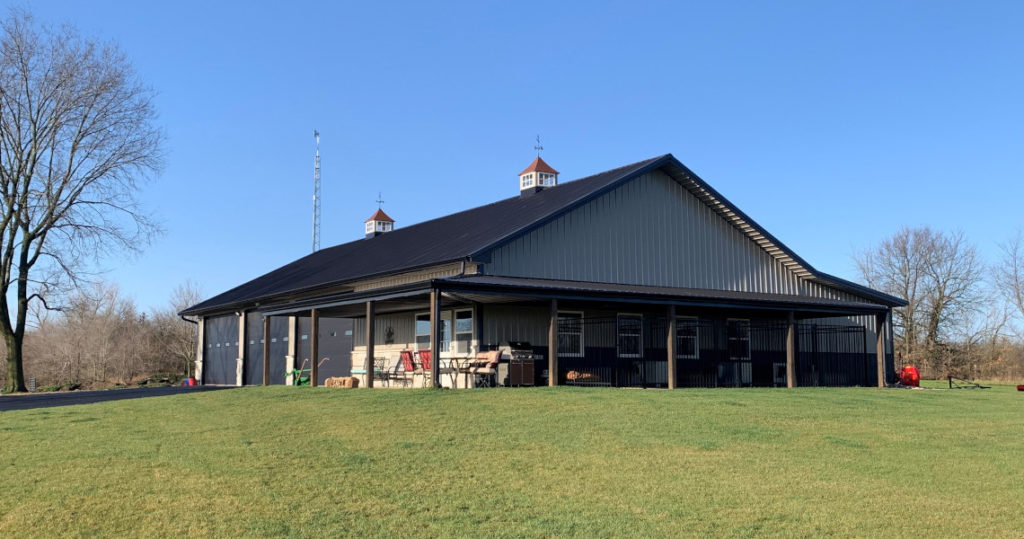
If you’re running out of space in your home or commercial building, the thought of extending your area may have entered your mind a time or two. Unfortunately, building add-ons can seem like an extra hassle or expense you haven’t planned for. Luckily, a lean-to can be a simple and affordable solution to your additional space needs. A lean-to is a simple way to add a new building or space to a pre-existing metal building and expand the usable area of your main building. These high-quality metal structures can be designed and built to your specific needs, whether you want a small space or a more considerable expansion. Whether you’ve already been thinking of adding a lean-to to your metal building or are just getting started, we’ll guide you through some basic information to help get your wheels turning.
What is a Lean-to?
If you’re an avid outdoors person, you might be familiar with the concept of a lean-to shelter. In a pinch, somebody can build a lean-to structure out of a few supports, rope, and a tarp for the sloped roof. These simple structures are created by using another existing structure to build off of. Essentially, the building looks as if it is leaning against another building.
The metal lean-tos you might have in mind are much sturdier than creating a basic shelter if you have to spend a night in the woods. While they are traditionally built as add-ons to another building, lean-tos can even be created as standalone structures. A lean-to may be a shed or garage that is attached to the wall of a larger building and usually has a single-slope metal roof. These can remain open or be enclosed as a building addition. This structure is a simple and cost-effective way to extend the dimensions of your home without much investment. These can be the perfect addition to garages, barndominiums, workshops, or any other existing building.
There’s no shortage of ways to use metal lean-to sheds. From outdoor patios to enclosed storage, the only limits are your imagination and your budget. Explore some of our ideas for using a lean-to addition on your metal frame building to get inspired!
7 Uses for Lean-tos
Carport
One everyday use for a lean-to shed is as a one-car metal carport. Lean-tos are typically wide enough to fit a single vehicle and can help protect it from the sun and elements. Whether you have a garage or not, a lean-to carport can be an ideal solution for those who don’t have the space to cover another vehicle.
Garage
A step up from the metal carport lean-to, a metal garage provides even more durability, protection, and storage space for your needs. Adding on a lean-to and enclosing the walls can give you the additional space you need for vehicle storage. This gives you more privacy and protection for your vehicle storage.
Storage Shed
The lean-to storage shed is the perfect addition for all your storage overflow. If you’re limited on storage space in your home or need a specific location to store your outdoor equipment, an enclosed lean-to can provide the storage space you need. These can be fully enclosed and sized to your extra storage needs. This storage building can be ideal for storing lawn care equipment, power tools, patio furniture, firewood, and more.
Animal Pen
Whether fully or partially enclosed sidewalls, a lean-to can provide excellent shelter for livestock as an add-on to a metal barn. The covered area can help animals to stay out of the elements and protect them from inclement weather conditions, while any open-air sections provide fresh air. This structure could be customized with stalls or feeders, whether it’s built for medium-sized animals like sheep or even smaller chicken coops.
Shaded Garden
Are you considering adding a vegetable or flower garden outside your home? Not all plants love full sun. An open-air lean-to allows you to control which garden section has full sun versus shade. This helps you to plan for all your planting needs and provides the gardener extra coverage from the heat.
At-Home Gym
If you’ve always dreamed of an at-home gym but don’t have the space, a lean-to addition could be a simple solution to creating your own space. Building on the side of your home and enclosing the area is a great way to create a blank canvas for your workout needs, and it can always be updated in the future as your vision changes.
Outdoor Patio
Creating an outdoor oasis to spend your spring and summer is the dream of many homeowners. Adding a lean-to can help provide the foundation to build this space. A lean-to patio offers the ideal shade for enjoying the afternoon sun from the comfort of your seat. This area could even be screened in for more protection from pests.
Get Started Planning Your Metal Building Lean-to Addition
At Worldwide Steel Buildings, each metal building can include a lean-to or overhang that can leave it open or enclose the sidewalls. And all our metal buildings include a 50-year warranty so you can rest easy knowing we have standards of durability and high-quality for each structure. So if you’re ready to add on to your pre-existing structure, contact the building specialists at Worldwide Steel Buildings to see how we can help you make your dream a reality. Call us today at (800) 825-0316. Our experts are standing by to help answer all your questions and create the building design to fit your needs.
8 Types of Warehouses
There are a variety of warehouse types that can benefit businesses, large and small. The warehouse you choose to build (or use) for your business needs depends mainly on the type of business you’re operating. For example, inventory storage is becoming more and more critical as online businesses become more commonplace, or you may need ample space to complete manufacturing for your business to operate effectively.
While warehouses may not seem like a glamorous topic, these types of buildings are the backbone for many business operations; modern warehouses are often clean, organized, and elegantly designed, even including comfortable office spaces inside for doing day-to-day paperwork. With our custom design tools and flexible options, you can make your commercial warehouse more than just a dreary facility for stored goods.
Different types of businesses have different warehouse needs. So let’s discover eight different types of warehouses, from public warehouses to distribution centers, to help you determine which warehouse type is the right solution for your business.
Public Warehouse
A public warehouse is a space owned by a third party or government warehouse that is rented to other private sector companies. These may also be known as third-party logistics (3PL) warehouses. Somebody can rent the space for business or personal use, and this type of warehouse often offers a warehouse management system for its renters. These can be a more affordable option for business owners who need to store products for a short period of time compared to other options that might be more expensive. Renters are typically charged on the number of goods stored, duration of storage, and other services provided, such as fulfillment process services.
Private warehouse
A private warehouse facility is typically owned and operated by a private company, such as wholesalers, distributors, or manufacturers. Online marketplaces and large retail companies also have their own warehouses for storing inventory. While private warehouses typically have a significant up-front capital investment due to building costs, facility management, and regular maintenance, they can provide considerable benefits to growing your own business. With the help of Worldwide Steel Buildings, you can have a private metal warehouse that’s durable, cost-effective, and built in a shorter timeline. Plus, our customizable designs make it flexible to your business needs. Investing in a private warehouse gives you total control to determine how to best use and create the space.
Cooperative Warehouse
Sometimes it makes sense to join forces with another company (or companies) to invest in a shared warehouse space. Joining forces in this way helps to reduce operational and storage costs. A cooperative warehouse is a storage facility that a group of businesses owns. Cooperative warehouses are a less common warehouse type but are practical and provide benefits to businesses that decide to combine their resources and needs. A cooperative warehouse is built or purchased with shared money from the partner companies. It is often organized as a limited liability company (LLC). The companies in this co-op are typically from a similar industry with comparable business needs. Since they have formed one larger entity, the members may also benefit from discounts on products and warehousing services for a larger inventory they wouldn’t have qualified for on their own. A common business that uses this warehouse option is wineries.
Consolidated Warehouse
Consolidated warehouses are third-party facilities that collect small shipments from different suppliers to combine them into a bigger, more affordable shipping load. The shipments are usually going to one centralized location. This can be an attractive option for companies that have lower inventory. Still, because the consolidated shipments are only for one area, there may be limitations for companies trying to expand. Using a consolidation warehouse can reduce costs and improve your supply chain’s performance.
Smart Warehouse
The smart warehouse might be the way of the future! These warehouses get their name from using advanced technology and automated AI, such as robots and drones, for their operations. This could include identifying and receiving orders, counting inventory, storing items, and sending orders to the right place. Smart warehouses can have nearly the entire operation automated. These automated technologies allow warehouse workers to increase the efficiency, productivity, and quality of their facility and decrease human errors. Smart warehouses are a go-to option for large companies like Amazon that want to expedite their order fulfillment process and inventory management system.
Bonded Warehouse
A bonded warehouse will be helpful if a company wants to expand its business by importing international goods. A bonded warehouse is a secured area where imported goods are stored while customs duties are completed and paid for. The fees are only paid on the items once they are released from the facility. The merchandise can stay in the bonded warehouse for up to five years from its import date. The warehouse space is typically versatile enough to accommodate a variety of products. This is an ideal warehouse for businesses that deal with exporters and cross-border trade.
On-demand Warehouse
As ecommerce businesses continue to rise in popularity, the need for on-demand warehousing has also increased. Also known as on-demand storage, these warehouses allow businesses to connect with other companies with excess warehousing space. On-demand warehousing is a platform that connects warehouses that have extra space with companies that need short-term or seasonal storage. This option is flexible and more readily available, allowing businesses with fluctuating needs to utilize the service for their inventory storage. And it can be a more cost-effective option. These can be an ideal option for small businesses and ecommerce startups.
Distribution Center
Distribution centers are comprehensive logistics operations that provide more than inventory storage to businesses, such as warehouse management. They also store, pick, pack, and ship items to customers. These centers also often offer extra warehousing services, such as overseeing returns and helping companies manage their supply chain. The products in a distribution center move much more than in a typical warehouse option. This is different from fulfillment centers which are typically used by third-party logistic companies.
Benefits of a Metal Warehouse
No matter the type of warehousing your business needs, there are many benefits to choosing a metal warehouse for inventory storage space and fulfillment process. Building your own private warehouse gives you the ultimate control over how your business is run, or even making a consolidated warehouse your actual business is an option. Whatever the reason for your warehouse needs, here are five benefits to building a metal warehouse:
Durability
These metal buildings are designed to withstand harsh weather conditions and regional snow loads. Plus, each building comes with a 50-year structural warranty. Steel structures can be ideal for facilities that need to withstand the elements. And each of our kits is made from the highest quality building materials available.
Size
With steel buildings, the sky is very nearly the limit. Worldwide Steel Buildings can feature clear spans up to 225 feet with added roll-up doors and many customizations to design the space you need. Building a large warehouse is just the start of the possibilities, with the option to partition the area as you need. You can also make these buildings extra wide and extended to create plenty of space for inventory storage.
Flexibility
Each metal building kit is built to our customer’s specific needs. From custom steel frames to wall panels, these metal warehouse kits can accommodate all your business needs. Each pre-engineered metal building is custom designed and formatted to your specs.
Cost Effective
Worldwide Steel Buildings are precisely engineered for simple modular assembly with no on-site modification. Each of our metal building kits is cost-effective in time and money. Our designs make for quick construction, while our steel buildings are often more economical than conventional.
Minimal Maintenance
Metal buildings need little maintenance to keep them looking new and operating effectively. These steel structures also have the added benefit of offering extra protection from termites, fire, and winds.
Building Your Own Metal Warehouse
Ready to get started building the metal warehouse of your dreams? At Worldwide Steel, we’re happy to help you make all your steel building dreams come true. If you have an idea in mind but aren’t sure it’s possible, call (800) 825-0316. Our team is dedicated to providing support from the first phone call to the final assembly bolt. We can’t wait to see what you create!

